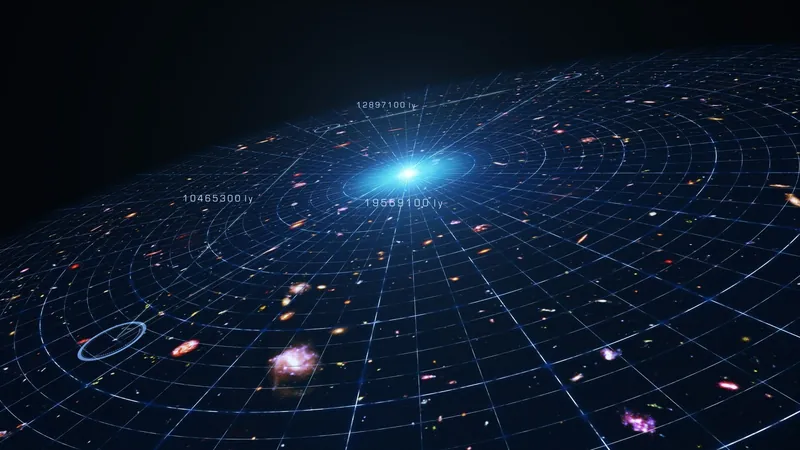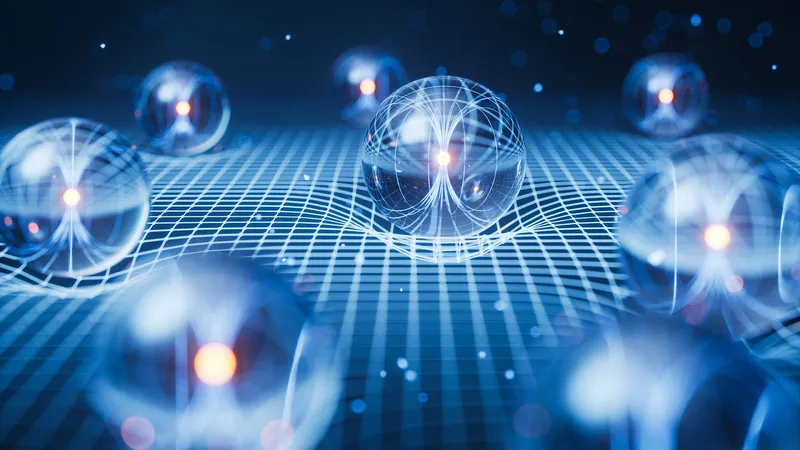
Unlocking the Universe: The Quest to Understand Dark Energy
2025-09-16
Author: William
The Cosmic Puzzle: Dark Energy and Matter
Science often resembles a gripping mystery novel—one crafted from theories that are constantly challenged at every turn. This narrative intensifies when it comes to the enigmas of dark energy and dark matter. While these elusive concepts wreak havoc on our understanding of general relativity at vast cosmic scales, our own solar system offers no clues whatsoever.
Confronting the "Great Disconnect"
A groundbreaking paper by physicist Slava Turyshev of NASA's Jet Propulsion Laboratory proposes a way to bridge this gap. He tackles what he terms the "Great Disconnect," which highlights the disparity between cosmological observations and the orderly dynamics we witness in our solar system. While dark energy's effects loom large in sparsely populated regions of space, they entirely vanish in the gravitational embrace of our solar system.
Can You Hear Me Now? The Solar System's Silence on Dark Energy
Within our planetary neighborhood, everything appears normal—planets orbit as predicted, and spacecraft navigating the sun's gravitational fields showcase data consistent with general relativity. None of our instruments have detected anomalies that could hint at the influence of dark matter or energy.
Evidence Hidden in the Cosmos
Yet, the universe itself tells a different story at grander scales. The cosmos is expanding, and the mechanisms behind this phenomenon might transcend our current understanding of physics. Some theorists suspect a 'screening' mechanism is at play, where the properties of whatever causes this cosmic discrepancy shift based on surrounding matter density.
The Chameleon Effect and Vainshtein Screening
Two major models arise in this context. The 'Chameleon' model suggests that a hypothetical fifth force adjusts its influence depending on the density of surrounding matter. In low-density areas, it displays a strong effect typically attributed to dark energy, while in high-density environments, it becomes virtually undetectable.
Conversely, the Vainshtein screening model posits that this force is effectively muted by the powerful gravitational fields of massive bodies, like our sun. This mechanism introduces the idea of a ‘Vainshtein Radius,’ within which the fifth force remains suppressed due to intense gravity, only returning to full strength beyond certain cosmic thresholds.
The Need for Targeted Missions
To truly test these theories, we need dedicated missions to explore our solar system. As Turyshev emphasizes, pursuing experiments without solid theoretical frameworks is fruitless; previous efforts have yielded no evidence contradicting general relativity. However, should theorists develop testable predictions informed by deep-space data, we could design missions aimed at revealing hidden interactions within our solar system.
A Future Filled with Possibility
While it may take time to craft instruments sensitive enough to unveil these mysteries, an incremental approach focused on advancing technological capabilities can pave the way forward. If we nail down a hypothesis with definitive predictions that can be verified, launching such a mission could redefine our grasp on the nature of the universe and flip the script on everything we thought we knew.









 Brasil (PT)
Brasil (PT)
 Canada (EN)
Canada (EN)
 Chile (ES)
Chile (ES)
 Česko (CS)
Česko (CS)
 대한민국 (KO)
대한민국 (KO)
 España (ES)
España (ES)
 France (FR)
France (FR)
 Hong Kong (EN)
Hong Kong (EN)
 Italia (IT)
Italia (IT)
 日本 (JA)
日本 (JA)
 Magyarország (HU)
Magyarország (HU)
 Norge (NO)
Norge (NO)
 Polska (PL)
Polska (PL)
 Schweiz (DE)
Schweiz (DE)
 Singapore (EN)
Singapore (EN)
 Sverige (SV)
Sverige (SV)
 Suomi (FI)
Suomi (FI)
 Türkiye (TR)
Türkiye (TR)
 الإمارات العربية المتحدة (AR)
الإمارات العربية المتحدة (AR)